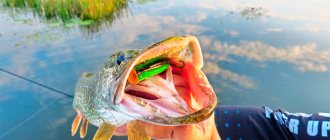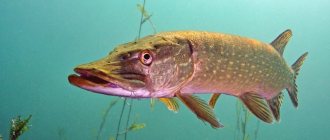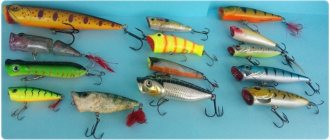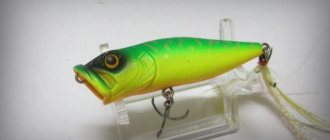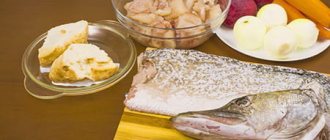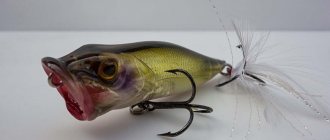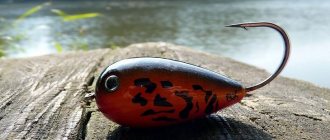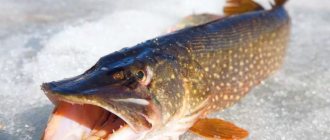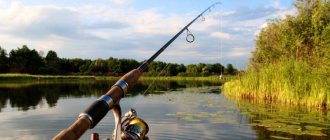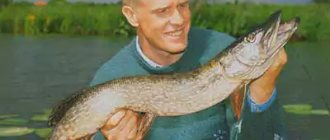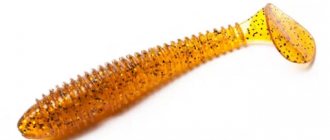The right pike popper is not just another bait that is useful to check when looking for workable options. In shallow waters or at their border with depth, especially in summer, it is these surface topwaters that can make fishing, since they don’t take any other baits at all. Naturally, there are features and nuances in using such bladeless wobblers. Let's take a closer look at how to catch pike with a popper, and which lures on the market really work and are catchy.
Surface lures for pike
There are many baits for catching pike from the surface and in the subsurface layer. These are shallow-water wobblers, walkers, silicone non-snags and, in fact, poppers. Catching pike with poppers is interesting and spectacular - often the predator attacks with acceleration, splashing, sometimes flying out of the water. In shallow waters, the toothy one also hunts for mice, chicks, and amphibians that accidentally fell into the water, sometimes reacting instantly. Often the bite follows immediately after casting - on the first splash of the landing bait.
Popper is a gurgling bladeless wobbler with a cup-shaped recess in the head, from the English word “pop” - gurgle, plop. When jerking, the cup collects an air bubble, which, when released, produces such a sound. Some poppers are equipped with slots on the sides of the recess, which, when wiring, gives additional trickles or splashes in the water. In addition, due to the configuration of the body and internal design, a good popper does not just jerk along the surface, but wags its body, creating its own vibrations, like a regular large shad and other crank-like varieties of wobblers.
When fishing for pike, it is advisable to use poppers in combination with other surface baits, fishing the entire clear layer of water at the fishing point. It is also necessary to check nearby bushes, using non-hooking pike hooks for this.
When and where to catch pike with poppers
The main time for fishing for pike with poppers is late spring, summer and early autumn, in warm water. At this time, pike roam in shallow waters, in grass, in water areas that are warmed up and overgrown with mud and algae. In overgrown areas, poppers are effective in combination with non-snagging hooks. We stretch frogs and Croatian eggs over water lilies and reeds, and poppers through clear areas and windows, along the border of the thickets. In summer, in shallow waters, especially in small reservoirs, large pike are also found.
Common fishing areas are any ponds, oxbow lakes, lakes, quiet sections of rivers with depths of up to 2 meters with an abundance of vegetation in the depths. Zhabovniks, peat quarries, any coastal strip with reeds, shallow channels and branches of rivers and reservoirs are promising. Naturally, poppers should not be relied upon as the only working bait. You need to use them with other methods of catching pike with a spinning rod, looking for an option that will seduce the toothy one today.
Application tactics
For pike, it is better to use large poppers from 65 mm or more, the weight corresponding to the spinning test. The usual size is 7-10 cm and weighs up to 20 grams. Large poppers weighing tens of grams are used in jerking, and small ones are used on light and ultralight tackle. The smaller the popper, the greater the likelihood of catching a perch or pencil with it, rather than a large pike. For large toothy fish, it is better to use larger baits - poppers 80-100 mm.
- Opinions were divided on coloring. Some anglers believe that color is not important - the pike sees only a silhouette in the water from below, and comes to the bait based on sound and vibrations. However, sometimes color is still important. This is proven by cases when two anglers with the same baits, but different colors, fish differently in the same place. Sometimes pike take better on dark colors, at other times - orange, red, acid yellow. It all depends on the specific conditions on the reservoir, the level of illumination and the purity of the water. The more cloudy the water, the more bright acidic colors are a priority.
- In warm water in summer, pike fish better in the morning or evening. In spring and autumn, as well as in summer, when it is cloudy all day, the toothy fish can peck during the entire daylight hours.
- We use poppers to check locally specific anomalies - overgrown shore breaks, pockets, snags, areas with underwater algae. Splashing around in vast expanses with great depths is almost useless. In deep waters it is better to use spinners, wobblers or jigs in the depths. Pike are well caught using surface splashes near bushes and in shallow waters, since in these places the entry of various animals into the water, which are part of the predator’s diet, is a common occurrence.
- On rivers, we also check areas that are overgrown under water before and after rapids, entrances and exits from holes, and rapids with long algae fluttering with the flow. Pike often stands under such a mass of grass at the end of the rapids, waiting for a fish that has weakened after overcoming the stream.
Popper animation technique
To catch pike with a popper, you need the correct technique for working with bait. At the same time, the rod is tough and biting. Of course, not to the same extent as for large wobblers for pike when twitching, but still it is better to use a light rod that is fast in action, since the basis of the retrieve is jerking.
- Working with a popper is in some way a type of twitching for pike. In addition to selecting the pattern of jerks, pauses, and intensity of twitching, you need to achieve such movements so that the bait creates the right gurgles.
- Pike does not like fast, chaotic animations - such wiring is more likely for a perch, and not for a toothy one. The delivery of the popper to the pike should be moderate, more monotonous. However, with the general rhythm of the wiring, the predator sometimes reacts to disruptions in the monotonous game - unscheduled pauses or small twitches.
- We experiment with the strength of the jerk, pause and rhythm of twitching. You need to start with a measured retrieve, a medium-power jerk and a pause of 2-3 seconds - an active pike usually takes this pattern more often.
- It doesn’t work like that - we check a more measured game, with pauses of 3-5 seconds, even up to 10. Also measured.
- If the popper has its own game, for example, megabass pop or killer pop, we try stretches up to 1 meter long, in which the bait goes slightly deeper and wags its body.
- Small short twitches with short pauses sometimes work on passive fish.
- During the current we work with light twitching - a strike, a pause, two strikes and a pause.
Universal popper 65 mm
Surface bait. Length 65 mm, weight 12 grams. Popper for pike floating. Noisy. Made in 5 colors. 3D eyes. The hooks are sharp and thin. The rings are ordinary round wire. Supplied in a package. The best price/quality ratio.
Price at the time of writing.
The cost of a 65 mm popper is 73.20 rubles ($=73,269). Free delivery.
Customer reviews. Rating: 4.9; 5553 orders
- The goods arrived in Krasnodar. The track was tracked. The paint looks good. The hooks are sharp, there is no need to glue the loops. We are satisfied with the orders. The seller is honest, we will order more. Thank you.
- Everything looks great, the quality hooks are sharp and stick to your hands. I recommend the seller and thank you very much.
- Arrived quickly, got it with coupons for almost nothing, good quality, not the first time I ordered, the pike goes with a HURRAY!

